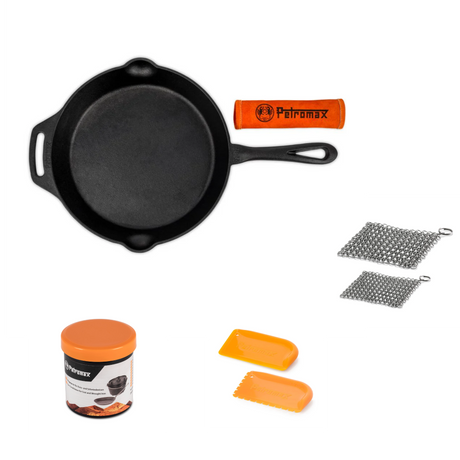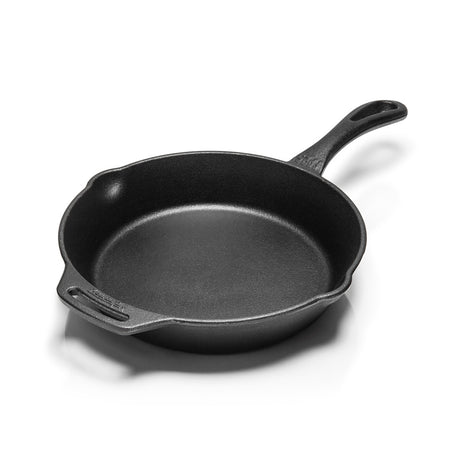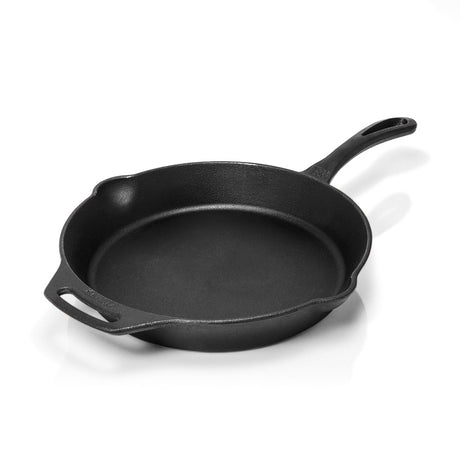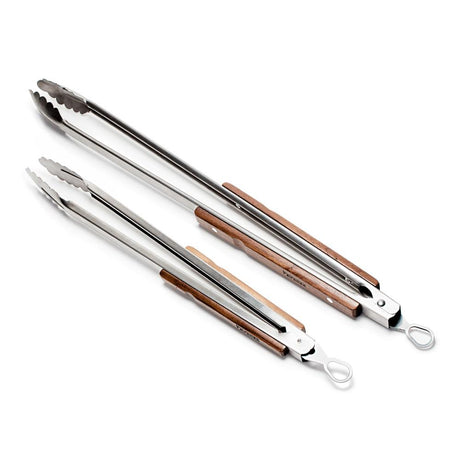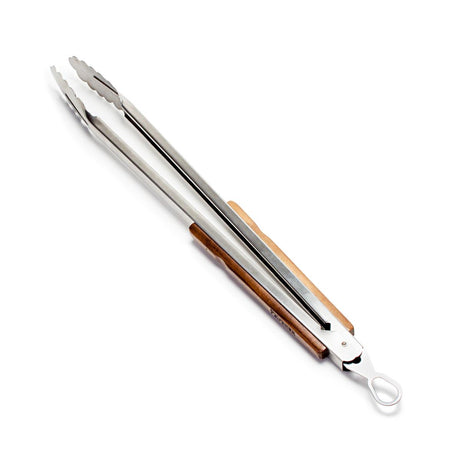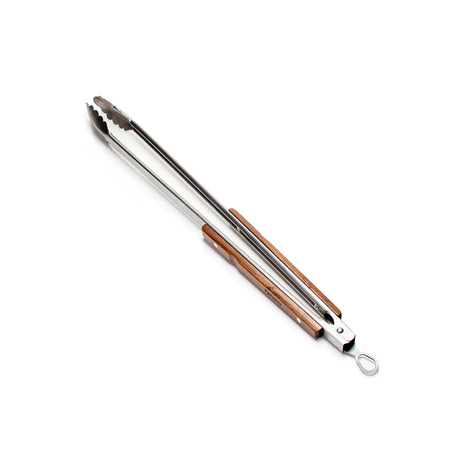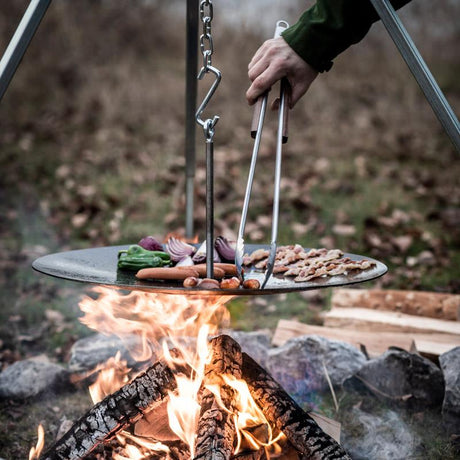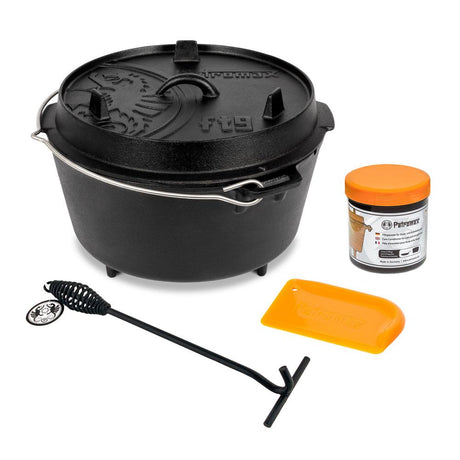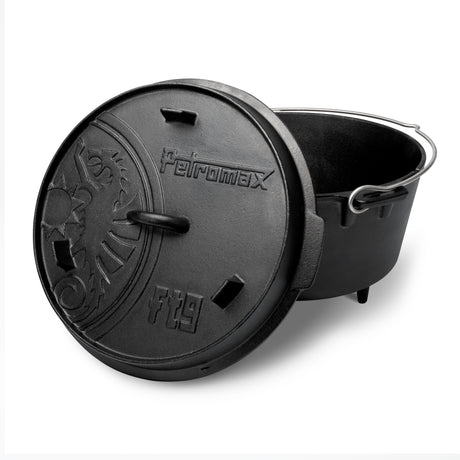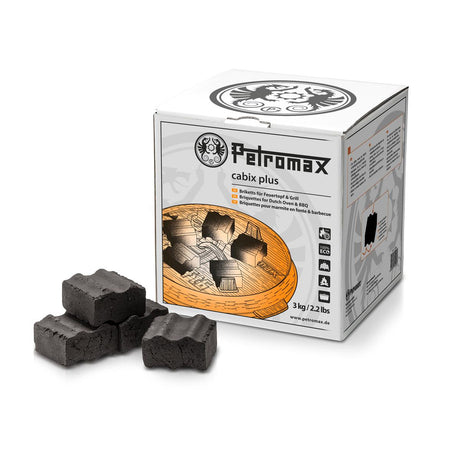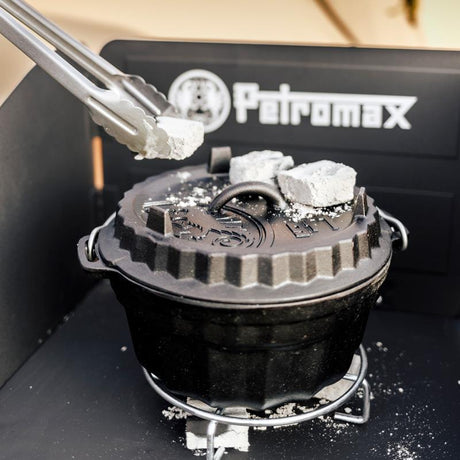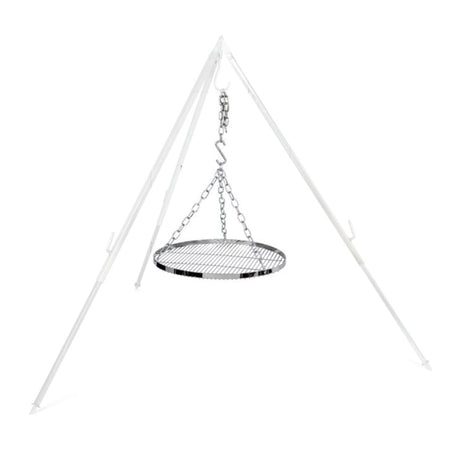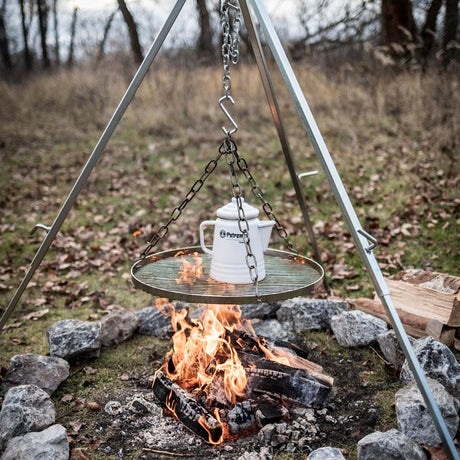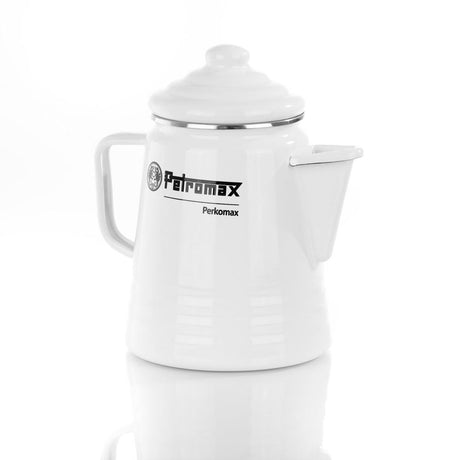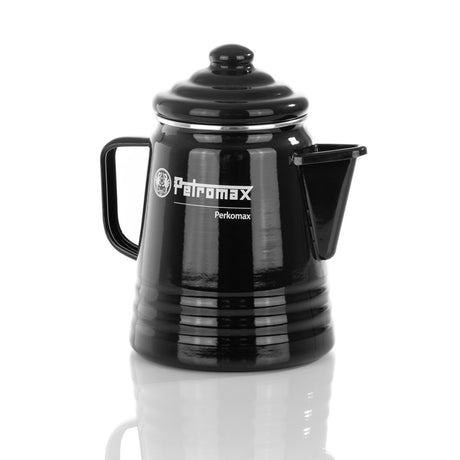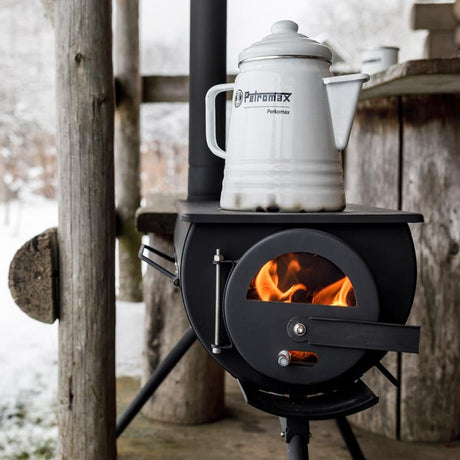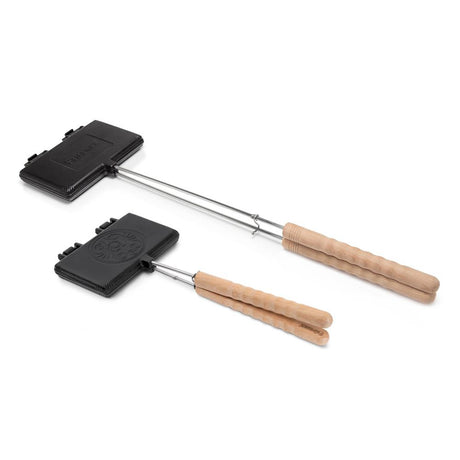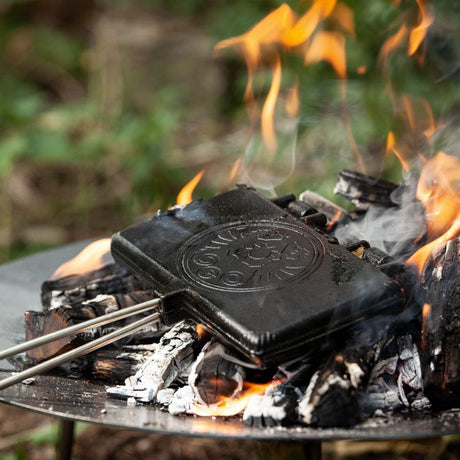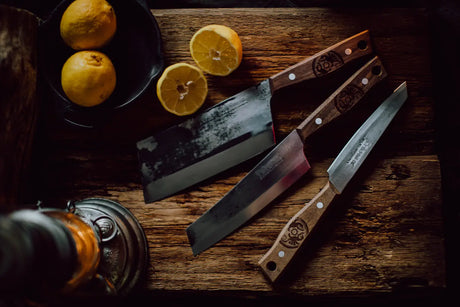Are you flirting with cast iron or perhaps have already had your first experience? Then you know for sure: cast iron is not just another barbecue utensil - it's a philosophy. In this detailed guide, we'll show you everything you need to know about barbecuing with cast iron. From choosing the right equipment to professional tips for perfect grilling results.
Table of contents
The origins of cooking with cast iron
Why cast iron is unbeatable for grilling
Versatility and benefits of cast iron
Preparation and selection
The grilling process
Post-processing and care
Conclusion

The origins of cooking with cast iron
Imagine traveling 2500 years back in time - to ancient China to be precise. This is where the fascinating history of cooking with cast iron begins. What began as a revolutionary method of food preparation has developed into a true art over the centuries. People quickly recognized the special properties of this material: its robustness, excellent heat retention and ability to give food a unique taste.
In the 19th century, cast iron experienced its major breakthrough in Europe and America as a result of the industrial revolution. Mass production made the robust pots and pans affordable for almost every household. What began back then has now developed into a huge community of cast iron enthusiasts - and for good reason!
Why cast iron is unbeatable for barbecuing
When it comes to barbecuing, cast iron really comes into its own. The material retains heat better than any other and transfers it evenly to your food. This means: no cold or hot spots, but perfectly cooked meat, crispy vegetables and crunchy crusts. Over time, a natural patina develops, which is better than any artificial coating. Your food does not stick and still gets a perfect branding.
The most important advantages at a glance:
- Excellent heat retention: cast iron retains heat longer than any other material. This means more even cooking and less temperature loss when placing food on the grill.
- Perfect heat distribution: No cold or hot spots - the heat is distributed evenly over the entire grilling surface.
- Natural non-stick effect: Over time, a patina develops that is better than any artificial coating. Your food does not stick and still gets a perfect sear.

Versatility and advantages of cast iron
The true strength of cast iron lies in its versatility. You can not only use it for classic grilling, but also for braising, steaming, baking, roasting and smoking. Even low-temperature cooking is no problem. This flexibility makes cast iron an indispensable companion for anyone who wants to take their grilling skills to the next level.
With the right care, your cast iron will not only last for years, but for generations. The patina that develops over time gives your grilled food a unique taste. It doesn't matter whether you grill over a direct fire or with indirect heat - cast iron can do it all.
In addition to classic grilling, you can also use cast iron for
- Braise and steam
- Baking and roasting
- Roasting and smoking
- Low-temperature cooking
- Preparing sauces and side dishes
Special features:
- Durability: With the right care, cast iron not only lasts for years, but for generations
- Flavor development: The patina gives your grilled food a unique flavor over time
- Temperature resistance: Whether direct fire or indirect heat - cast iron does it all
- Versatility: Can be used on the barbecue, campfire or stove

Preparation
The right choice of cast iron products
The basis for your barbecue adventure is the right equipment. In our range of cast iron molds, you will find the right tool for every purpose. Quality makes all the difference - a high-quality cast iron product will last you a lifetime.
Cast iron plate or pan - which is right for you?
The choice between a plate and a pan depends on your personal barbecue preferences. A cast iron plate is ideal for large quantities, smash burgers or if you want to prepare different components at the same time. With its large surface area and even heat distribution, it is the perfect all-rounder for convivial barbecue evenings.
Our high-quality cast iron pans, on the other hand, are our recommended purchase for juicy steaks, crispy vegetables or if you want to prepare sauces and side dishes directly on the barbecue. The concentrated heat and high edges make them the ideal tool for intense flavors and perfect cooking points.
| Cast iron plate | Cast iron pan |
|
|
The important first step: searing
Searing is like the foundation of a house - it has to be right for everything else to work. You can find out more about searing cast iron in our detailed guide. The process begins with thorough cleaning, followed by rubbing with high-heat oil. The cast iron is then heated to a high temperature and the process is repeated several times. This foundation is crucial for years of enjoyment from your cast iron.
Here are the basics:
- Clean thoroughly
- Rub thinly with high-heat oil
- Heat to a high temperature
- Allow to cool and repeat
Good to know: All Petromax cast iron products arrive pre-baked. As soon as you have your product in your hands, you can get started!

The grilling process
Barbecuing with the cast iron plate
The key to successful barbecuing with cast iron lies in patient preparation. Unlike conventional grill grates, you need a little more preparation time for a cast iron plate. Allow around 15-20 minutes for slow heating. You'll know when it's the perfect time to put the food on when a drop of water "dances" on the plate instead of evaporating immediately. For optimum results, we recommend using high-heat oil such as rapeseed or sunflower oil.
A particular advantage of the cast iron plate is the ability to work with different temperature zones. For example, you can sear on one side while gently cooking your vegetables on the other. This flexibility turns every barbecue session into a culinary experience.
The key to success lies in the preparation:
- Preheat: give your plate time! 15-20 minutes of slow heating is ideal.
- Temperature test: A drop of water should dance on the plate, not evaporate immediately.
- Oiling: Use high-heat oil such as rapeseed or sunflower oil.
- Zone grilling: Use different temperature zones on your griddle.
Correct heat and temperature control
Cast iron is a true master of temperature consistency, but needs time to heat up and cool down. Rapid temperature changes are not its strong point - but it retains heat all the better. When grilling, this means you need to plan ahead and set up different heat zones. The indirect grilling method works particularly well with cast iron, as the material distributes the heat evenly and retains it for a long time.
Here are the most important points at a glance:
- Heating up slowly prevents distortion
- Set up different heat zones
- Work with indirect heat
- Use a thermometer for control
The Dutch oven - your outdoor oven
With a Dutch Oven, you get a real all-rounder for your barbecue. This cast-iron fire pot opens up completely new possibilities for outdoor cooking. Not only can you prepare traditional stews in it, but you can also bake crispy bread, braise juicy pulled pork or even conjure up delicious desserts. The heavy lid with its raised rim also allows you to apply heat from above - perfect for even cooking and crispy crusts.
With a Dutch Oven you can:
- Bake bread
- Prepare pulled pork
- Cook stews
- Conjure up desserts
Post-processing
Cleaning and care
Proper care of your cast iron is crucial for its longevity. You can find more tips on how to care for and clean cast iron in our detailed guide. The most important thing is to clean your cast iron immediately after use while it is still warm. Use hot water and a brush - that's all you need.
The washing-up liquid question
One of the most frequently asked questions is about using washing-up liquid. The clear answer: No, you don't need washing-up liquid! On the contrary - chemical detergents can damage the valuable patina that has built up over time. Hot water and a brush are all you need. For stubborn incrustations, coarse salt can be used as a natural scouring agent. A wooden spatula can also be useful to gently remove residues.
Caring for your barbecue grill
After grilling, you should thoroughly clean the still-warm grill with a wire brush. A thin film of high-quality oil then protects against rust and improves the patina. Make sure it is stored in a dry, airy place. Regular inspection and care will pay off - your cast iron will remain a reliable companion for years to come. For more information on cleaning the grill grate, you can find our guide here!

Conclusion
Cast iron is more than just a barbecue accessory - it's an investment in your barbecue skills. With the right care, your cast iron will get better with every use and can even be passed on to the next generation. The key to success lies in careful preparation, the right temperature control and conscientious care after grilling.
Take time to get to know your cast iron and develop your own style. Experiment with different techniques and recipes. The possibilities are almost endless, and with every barbecue you will discover new advantages of this traditional material.
Become part of our Petromax family! Share your experiences with us, exchange ideas with other cast iron enthusiasts and be inspired by new recipes. Our support team is always available to answer your questions.
Your next barbecue adventure is already waiting - with cast iron, it's guaranteed to be a special experience!
Barbecuing with cast iron is just the beginning! Take a look at our other articles to find out more about the versatile Petromax products and expand your equipment!
Petromax barbecue gadgets: How to get the most out of your barbecue evening
Cast iron vs. stainless steel: Which material is better for outdoor cooking?
Seasoning cast iron pans - How to season Dutch ovens & co. properly
Baking wrought iron: Tips and tricks for pans and fire bowls



